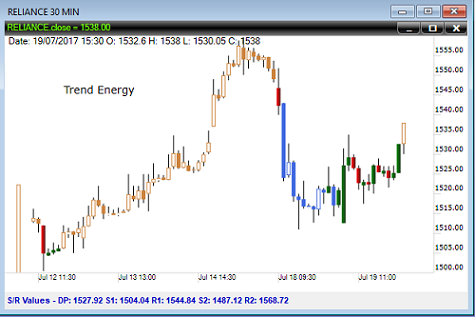
When you take your finances in your own hands and begin managing your own stock investments, you have two main ways you can analyze the stock market: fundamental analysis or technical analysis. These two types of analysis can be applied not only to stocks but also trading options, futures, Forex, and bonds. Nowadays, some combination of fundamental analysis and technical analysis are usually used and there are a ton of stock market software and websites that makes such analysis much simpler. What’s the basic difference between the two types of market analysis?
- Fundamental analysis is what most people are familiar with and probably had exposure to in school. Fundamental analysis looks at the companies, their business, and economic factors that may affect the stock’s future price. This is more common among investors, who look to price earnings growth and stock valuation for long term growth.
- Technical analysis, while often unknown to the public, has been around about as long as the markets have. It’s not a secret, so why not learn to use it’s advantages? This method assumes that non-random patterns and trends exist in the financial markets, though not necessarily all the time. Technical analysis is more common among traders, who are often more active and don’t have the time to wait for the business to affect the stock price, so they look for patterns in the stock price itself.
Unlike fundamental analysis, technical analysis focuses on analyzing the price of the stock (or whatever asset you’re investing in), time, volume, patterns, and trends. So, said simply, technical analysts study the statistics of the stock itself, not the company behind it. The goal of using technical analysis is to anticipate instead of predicting the outcome by looking for clues in the stock’s statistics, much like sports fans look at star player’s stats.
Why Use Technical Analysis?
- Allows to prepare for buying and selling opportunities and dangers in advance. This takes a proactive approach rather than having to wait for company financial reports, compiled only at the end of the quarter and end of the year.
- Spend more time looking for opportunities with various price and volume patterns, which usually takes less time than studying a company’s financial data and business prospects.
- Better timing for buy and sell entries and exits, based on the statistics of patterns other data
- Better knowledge of what prices to buy and sell, again based on statistics and past records of the stock’s data.
- Choose better trade opportunities quickly by looking at a chart or even using stock market software that identifies specific patterns you know gives you a statistical advantage
Basic Technical Analysis Concepts for Buying & Selling (Trading)
- Trading with the Trend: simply following the current direction of what you want to buy or sell
- Support and Resistance: identifying supporting prices (where the stock have stopped going down and turned up) and resistance prices (where the stock stopped going up and turned down), traders assume this pattern to continue and buy at support and sell at resistance.
- Breakouts: stocks may stay in a range for a long time, even for years, but eventually they breakout, either higher or lower. Traders can take advantage of this breakout.
- There are many more math formulas, statistics, patterns, and strategies that investors and traders have been able to use to decipher stock data. Some examples you can research include: Fibonacci, Elliott Wave, market timing, and volume profiles.
How to Use Technical Analysis as an Investor or Trader?
- Position trading (medium to long term) – Whenever you buy or sell, you’re “trading.” Both investors and traders “trade,” the difference is just how long you hold an investment and how active you are. Both investors and longer-term traders do what’s called “position trading.
- Swing Trading (short to medium term) – Traders who buy and sell anywhere from a couple of hours to a couple of days.
- Day trading (aka scalping) – Trading that happens during the day between the market open and the market close only. Day traders don’t hold a position overnight, usually to bypass the potential risk of what could happen between today and tomorrow.
Proudly WWW.PONIREVO.COM
Source by Jeffrey Lin



